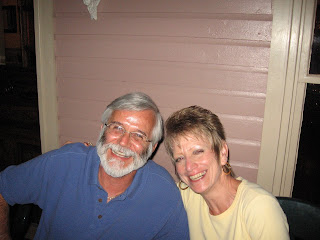 Pikes Peak from Crystal Creek Reservoir
Pikes Peak from Crystal Creek Reservoir Notice the switchbacks and the clouds moving in.
Notice the switchbacks and the clouds moving in. Looking down at the switchbacks.
Looking down at the switchbacks. The cog railroad nears the top.
The cog railroad nears the top. Colorado Springs and the plains below.
Colorado Springs and the plains below. View of the Rockies from the top.
View of the Rockies from the top. We (the CRV) made it.
We (the CRV) made it. Cripple Creek
Cripple Creek Old mine derrick
Old mine derrickYesterday we went to new heights driving the Pikes Peak Highway 19 miles to the top, 14110 feet above sea level. The peak, called America's mountain, is the eastern most of Colorado's 54 fourteeners. It has inspired people from gold seekers heading west with "Pikes Peak or Bust" painted on their wagons to Katharine Bates who wrote "America the Beautiful" after visiting the summit in 1894. The first road to the top was completed in 1888 and it is still the home of the second oldest race in the US, which was just held last week, the Pikes Peak Hill Climb. Another way to the top is via the Pikes Peak Cog Railway that runs from Manitou Springs to the summit. You can also climb to the top on Barr Trail, the path of a marathon that is run to the top and back down each year. The road travels through four climate zones and the top is above the tree line. The temperature was 75 at the bottom and only 45 at the top. The drive offers wonderful scenery all the way up but we were disappointed at not being able to see farther from the summit because of the smog on the plains and smoke from the distant fires to the west over the Rockies. We went early in the morning because almost every afternoon the summit becomes covered with clouds. We also drove to Cripple Creek, another mining town that is a National Historical District which has been turned into a gambling town. We started our visit at the Pikes Peak Heritage Center which gives an excellent overview of the areas history from dinosaurs to the more than 500 mines that produced more than 22,400,000 ounces of gold. The town is well preserved with the old facades looking much as they did over 100 years ago while housing modern casinos, restaurants and hotels on the inside. You can also tour other museums, a gold mine, ride on the narrow gauge Cripple Creek & Victor Railroad and of course lose your money in a casino. The surrounding hills still show evidence of the mining era with piles of mine waste and old mine derricks dotting the hillsides.



No comments:
Post a Comment